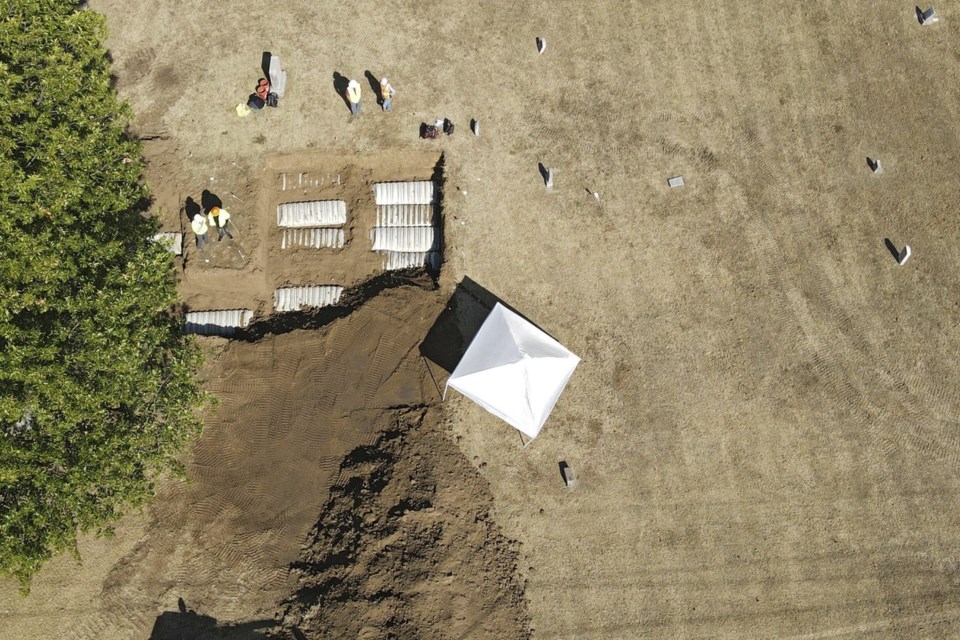OKLAHOMA CITY (AP) — A World War I veteran is the first person identified from graves filled with more than a hundred victims of the 1921 Tulsa massacre of the city’s Black community, the mayor said Friday.
The remains of C.L. Daniel from Georgia were identified by Intermountain Forensics through DNA from descendants of his brothers, said Mayor G.T. Bynum and officials with the forensics lab.
Bynum said a 1936 letter from an attorney for Daniel’s mother seeking veteran’s benefits led investigators to eventually identify him. Alison Wilde, a forensic scientist with Salt Lake City-based Intermountain Forensics, said the letter provided by the National Archives convinced investigators that Daniel was killed in the massacre.
More than 120 graves were found during the searches that began in 2020, with forensic analysis and DNA collected from about 30 sets of remains.
Daniel's remains are the first from those graves to be linked directly to the massacre, in which white people killed as many as many as 300 Black people.
The massacre began when a white mob, including some deputized by authorities, looted and burned Tulsa’s Greenwood District, also known as Black Wall Street. More than 1,200 homes, businesses, schools and churches were destroyed; and thousands were forced into internment camps overseen by the National Guard.
Oklahoma state archaeologist Kary Stackelbeck said the remains that were exhumed, including Daniel, were found in simple wooden boxes. Stackelbeck said investigators were searching for those types of caskets because they were described in newspaper articles at the time, death certificates, and funeral home records as the type used for burials of massacre victims.
Ken Miller, The Associated Press

